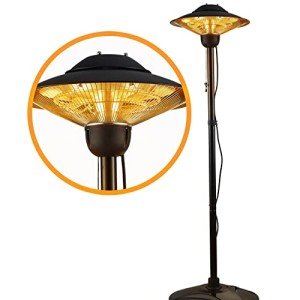How to Choose a Patio Heat Lamp Electric
You have many options when you want to heat your patio. Unlike propane models that require refills, electric heaters can deliver instant heat by simply flicking an switch or pressing a button.
They also don't emit gases that could cause health risks. Certain units come with adjustable heat settings to accommodate varying distances.
Type of Heater
You can relax outside throughout the day and all through the year with the right patio heater. Patio heaters come in many different types that include freestanding propane or natural gas models, as well as ceiling or wall-mounted electric radiant heaters. The choice you make will depend on the size of your space, power sources available and personal preference.
The majority of patio heaters are powered by electricity or natural or liquid gas and emit heat in convection as well as radiant heating. The heat output is measured in watts and then converted to British thermal units (BTUs) for comparison. Some models have adjustable heating settings for greater flexibility.
Patio heat lamps include the use of a burner that is mounted on a pole and an open-pored screen that reflects the flames and radiates heat downwards to warm objects, people and furniture. Some patio heat lamps include reflective reflectors that sit on top of the burner that can be silvered in order to limit the amount of heat is lost upwards.
The most well-known type of patio heater that is a gas patio heater is typically found in outdoor seating areas of bars and restaurants since they generate lots of heat quickly and distribute it evenly in all directions -- great for warming multiple tables. These patio heaters are portable and can be powered by a propane tank or plumbed in to your natural gas line. This is more convenient and comes with lower upfront costs, however it requires fuel.
A growing number of homes are equipped with natural gas lines, making these the ideal solution for those who prefer to use a gas patio heater. They are simple to install, however they require a gas line that's properly installed and operating to be safe. There are portable natural gas heaters equipped with extension hoses that can aid in overcoming this issue however they can also be a risk of tripping and an additional fire danger when not being used.
Safety
Electric patio heaters are safe to use in enclosed areas, since they allow heat to radiate upwards and not outward. They are not designed to be used on an unprotected roof. The heater must be placed at least 6" away from the ceiling and 18" away from the wall in order to avoid fire hazards.
Patio heaters made of propane and gas are only suitable for installation in enclosed areas with a durable cover made for outdoor use. The covers are typically made of fire-resistant fabrics and have a roof that can be closed. The safety issues with these kinds of outdoor patio heaters is due to the flame and fumes they emit. They should be kept away from any objects that could ignite, such as chairs and curtains.
When installing an electric patio heat lamp or any other type of patio heater, make sure you follow the manufacturer's instructions and safety guidelines carefully. Choose a model that has been awarded UL and CSA safety certifications. Also, be sure to read the user's manual thoroughly. Make sure that the heater is not within reach of children and pets. mouse click the following post that are freestanding like EUROM have a built-in tipping safeguard that shuts down the device in the event that it falls over.

If your patio heater is connected to natural gas lines it is important to examine the condition of the line periodically and have it tested for leaks by an experienced professional. If the line needs to be replaced, make certain to get a licensed plumber. A professional will be in a position to determine if the line needs to be routed through an underground pipe or not. A professional can also make sure that the patio heater is plugged in to an outlet that is GFCI-rated (ground fault circuit interruptioner) to guard against electric fires and shocks.
Installation
The size of a patio heater will determine how much heat it radiates into the room. It is crucial that the heater is placed in a safe distance from surfaces like plastic, which can deform and also wood, which can become too hot. Depending on the model of the heater, you can choose to mount it on a wall or a structure using traditional mounting brackets. Some models have soft start, which lowers the current peak to safeguard your circuits.
